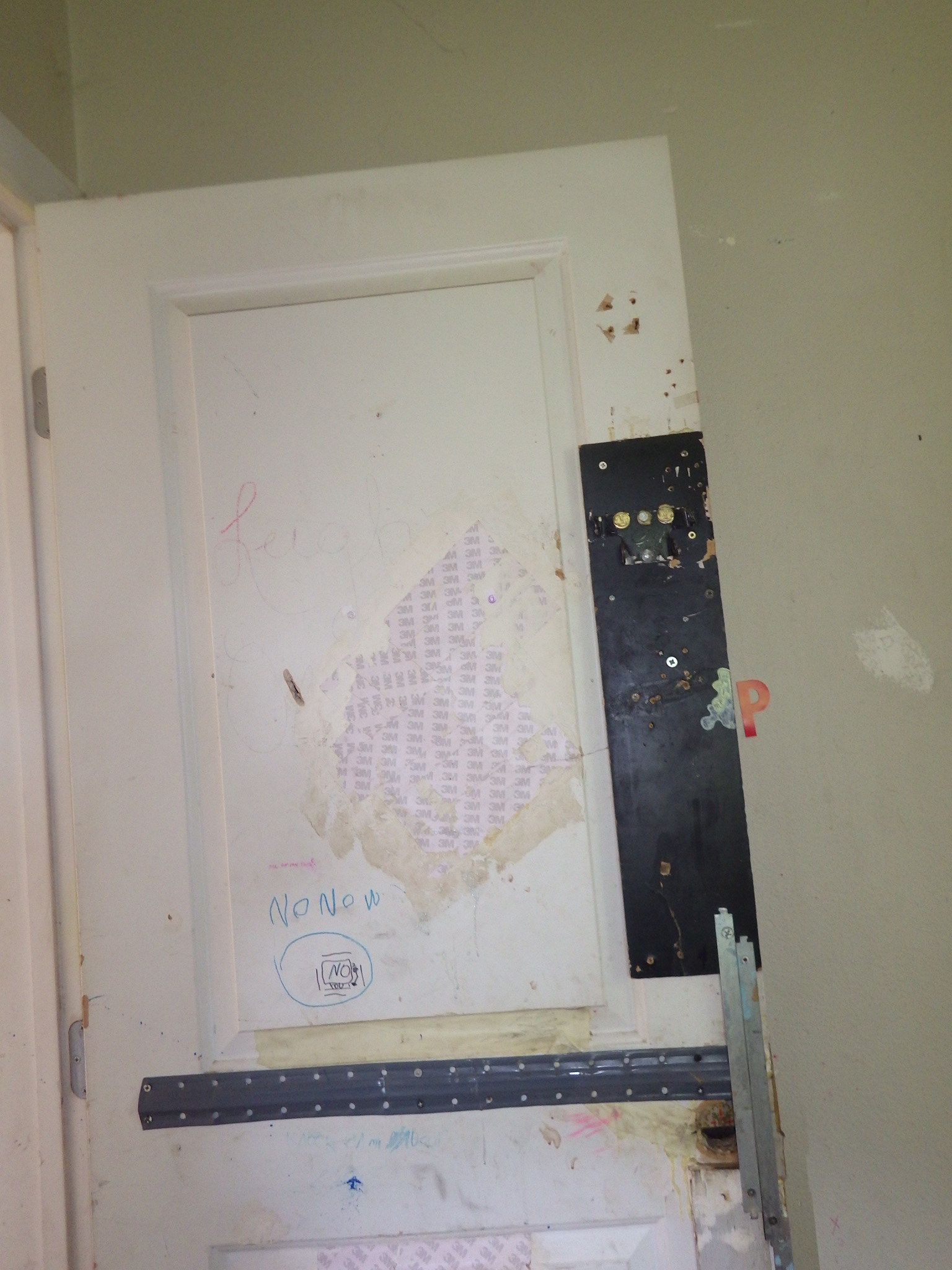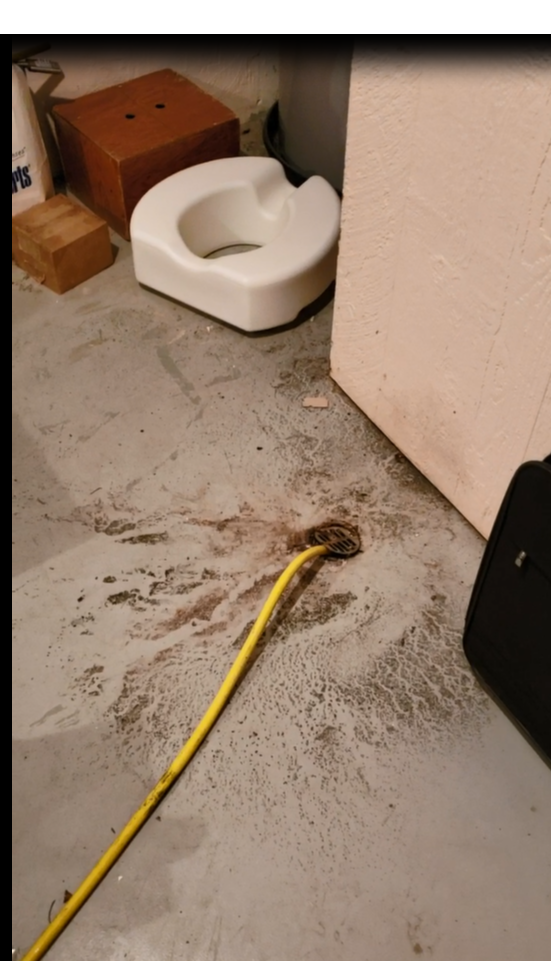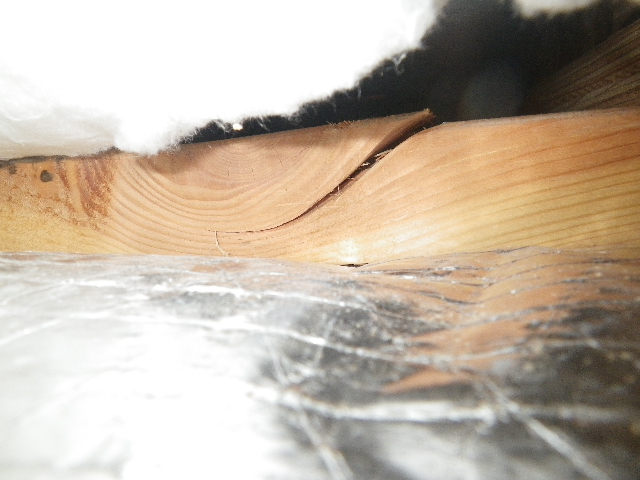
Sewer Scoping and Home Inspections
Sewer Scoping and Home Inspections
Having a sewer scope done while the home inspector completes his works looks like a no-brainer. After all, the home inspector will not be checking the plumbing under the slab of the house or underground.
I agree. That's why I recommend professionals to do sewer line inspections with professional grade equipment.
Why don't I do it myself? All the home inspector organizations say it is a great add-on that will make me a lot of money.
The truth is that I did offer sewer scoping with home inspections in Moscow and Pullman and Lewiston. But, the same as with home inspections, a person who does six a day is going to be far better at sewer scoping, finding problems before their YOUR problem, than a home inspector who does it on an occasional basis.
Also, in the State of Washington, a contractor's license from Labor and Industries is required to perform sewer scoping. I let my lapse when I stop sewer scoping. None of the inspectors in Pullman or Clarkston carry the license, either.
So, I recommend the following companies for sewer scoping here:
All will do a great job for you. They're pros in their field.
And, if you need a pro in the home inspection field, please give me a call. I'd be delighted to be of service.
Home Inspections and Coronavirus Covid-19
I wrote the following for one of the local associations. Sharing here . . .
Good morning, everyone. Wow, are things moving and changing quickly. From a home inspection perspective, I'm implementing the following protocols to protect your sellers:
All tools, especially my phone, will get cleaned with an anti-bacterial wipe prior to entering the home. I’ve taken the phone out of the otter box protection since that’s almost impossible to clean.
Only those tools necessary will enter the home and only when they're needed. Once used, they will be returned to the tool bag outside the home.
I will be cleaning all surfaces that I touch with an anti-bacterial wipe - door knobs, windows, bath fixture, all of it. For more information on cleaning, see the CDC Guidelines.
I'll be trying to avoid touching my face - as you know, that's a hard one, so . . .
I'll be washing my hands - a lot. I'll bring my own soap and a clean towel.
On the exterior of the home, in the attic, in the crawlspace, I'll be wearing surgical gloves. They will be disposed of immediately after use.
If you are the listing agent, expect a text or phone call to see if your seller wants me to wear a mask. While the government suggests they aren't necessary for healthy individuals, the goal is to make your buyers and sellers feel as safe as we can. If wearing a mask aids in this, I'll do it.
Traditionally, I've taken my shoes off to avoid making a mess. I'll be switching to disposable booties instead.
I'll be maintaining social distancing - this one is easy for introverts like me.
I will be adding even more video to my reporting. If buyers wish, I can Facetime from the home.
If anyone else has suggestions, please send them along.
Be safe.
UPDATE On Covid-19 Home Inspector Protocol: March 20, 2020
After a week of working with this protocol, I found a couple of spots that needed tweaking. A big one is customer management. Once the buyers get to the property, they have a natural inclination to touch things. Not making a value judgment on this, but facing the reality of the situation. So I’ve added a final step of cleaning every surface that they touch with sanitizing wipes. If it sounds as though I’m following behind them with a wipe in each hand, that’s exactly what I’m doing.
Another change is in my outdoor protocol. With the warmer weather we are experiencing, I can set up my cleaning station outside, so I don’t need to glove up there. I do the exterior of the home, wash thoroughly and resume the rest of the protocol.
If you are a Realtor reading this blog entry, may I suggest that you and your broker have each home inspector provide you with their protocol for the inspection process?
So What Do You Think? A Meth House?
Earlier this week, I went into a house at the request of a bank. The real estate agent that was generating a BPO (Broker Price Opinion) for them and became worried about what she saw. Not having a lot of training in some of the oddities of inspection but possessing abundant common sense, she told the bank to hire an inspector to evaluate the property.
That was me.
It didn’t take more than a few seconds to go from normal inspector mode to “don’t touch a thing” mode. It was that bad. The odor, bitter and strong, hit me hard at the front door. The kitchen was to the right and the rolling smoke stains told the story of repeated cooking.
The bath tub was etched and scarred, abused by all the chemicals that got dumped down the drain.
Chemical stains were everywhere.
Unfortunately, there were no chemical bottles present except for a pair of oxygen bottles. I think they were used for transport of anhydrous ammonia. Anyone taking a hit off the tanks would like be dead. The meth cooks have used propane tanks for years to disguise their ingredients. I think they are evolving again.
The most disturbing part of the process was finding a bedroom door with a lock hasp on the outside.
The meth cooks had kids and were locking them up.
Sometimes I get to see a little too much.
How Old Is This House Again?
I was having a discussion with Chip Kenny, the inspector at Inland Northwest Home Inspections, about a house he was inspecting. The visuals - type of foundation, etc. - didn’t match the age of the home listed in the public sources.
I have run into this three times in the last year. The easiest one was a house listed as a 1965 building in a neighborhood in Pullman that was newer. The house had engineered trusses in the attic and the concrete foundation appeared to more modernly formed. When I opened the electrical panel, I found an inspection card for 1985. That fit much better, and I adjusted my report accordingly.
This structure was listed as a 1953 home - but the framing says 1900-1920.
The nastiest one had the listing agent blow a gasket and shriek at the buyer’s agent. This particular Clarkston house was listed as a 1974 home but none of the features matched the vintage. The attic was sheathed with dimensional wood, the attic framing was 2x4 rafters, the number of outlets was low, the foundation system was funky. It didn’t feel like 1974.
When the buyer’s rep showed up, I asked her about this. She commented that the seller had put a 1955 date in the disclosures. I ran with that and suggested a video sewer scope of the main drainage line. As it happens, the material was Orangeburg pipe and was in lousy condition. Given the extreme over-reaction of the listing agent, I wonder if she already knew that the line was questionable. Hmmmm?
Anyway, to the point. How does this happen? How does an old house get listed as a newer home?
The answer is not that the real estate agent is deliberately deceptive (usually!) What happens is that the house undergoes a major remodel, so much so that the home is nearly new in a functional sense. The owner applies for, and gets, a new certificate of occupancy from the municipality. The records get updated with the new C.O. When the house gets listed again, anyone (or any computer algorithm) will locate the last certificate of occupancy and that date gets assigned to listing.
This is not a 1974 attic space even though that was the listed age of the home.
The only time we used to see this happen was when a home was moved. With tighter controls coming into play at the municipal level, I expect to see more of this sort of mischaracterization occurring. The home inspector community will need to be aware of the potential for the actual vintage of the building to be different from the documentation. Unfortunately, with so many new inspectors arriving on the scene that lack the thousands of houses of experience to recognize the oddities, this likely will get missed.
The Hose Isn't the Clue - When to Worry about Your Sewer Line
Home inspections are a neat way to make a living. I love the puzzle-solving aspect involved in the process. Today, I was in a 1970s vintage home that made me stop and go '“Hmmmm.”
Why? Because of an odd little circle of dirt. It was around a floor drain and might as well as have announced “Flood!” A small one, but since I hate water outside the plumbing, it made me dig deeper.
I ran water in three bathrooms and the kitchen for an hour to replicate the flood event. No bueno, no flood. It wasn’t for a lack of trying.
Still, I advised my clients to get a sewer scope done on the main waste line. Something happened and I’d rather they spend a few extra dollars making sure the drain is good than tell them that I did my best but what’s underground is not my responsibility only to have the system blow up six months after they move in.
The standards of practice define what I must look at and what’s within my scope, but it shouldn’t prevent me from using my brain.
Why Are Heat Pumps on Pedestals?
Ever walk past an a/c unit and wonder why it had 'legs' under it? Okay, maybe not, but there's a reason that some due and some don't. Watch to see what clues those legs provide us.
Isn't the Water Supposed to Drain AWAY from the House?
The crawlspace vents are lower than the surrounding soil. It's a fairly common occurrence and easy to fix.
More often than not, your builder is not to blame - it is the landscaper who is beautifying the home without the awareness of the rest of the home systems.
360° Pictures are Here!
Want to show your parents, your kids, your friends your new home but finding the photo options limited?
Safe@Home has a solution for you! We've invested in new software and cameras that will allow us to put 360° pictures into your report. We're excited about this new feature and are offering it without any additional charge! All you have to do is ask!
Cracked Heat Exchangers
Cracked heat exchangers are not just expensive - they can be dangerous as hell. First, background. A gas-fired furnace (oil, too) has two different air-handling systems. The one most people think about is the blower that moves that wonderful warm air through the house on days where the temps, like today, are in the single digits.
The second system is the air supply for the burning of the gas. The furnace needs this air for combustion. The resulting flue gases are a mix of the air, minus a goodly portion of oxygen, and the fuel, minus a goodly portion of the chemical energy. That's where the heat comes from.
To get it into the house, we need to move the heat from the combustion cycle to the air-handling equipment. That's the role that the heat exchanger plays. It's a shell of metal that contains the noxious gases of combustion. The walls of the exchanger heat up and transfer the heat to the air driven by the blower.
The old furnaces from the 1960's and early 70's had thick shells and some of those old Lennox's can be hard to kill with anything short of a bazooka. Newer furnaces, especially the ultra-high efficiency condensing furnaces, don't last nearly as long. The new ones have much thinner shells and, to create greater surface area for the heat transfer, lots of dimples in the surface. Consequently, they tend to suffer metal fatigue faster than the old furnaces. Failures in heat exchangers have been reported in units that are only 15 years old.
Back to the noxious gases. What happens when the heat exchanger cracks? Well, we no longer have a separation between the gases and our interior air, the atmosphere that we breathe. The flue gases escape into the living 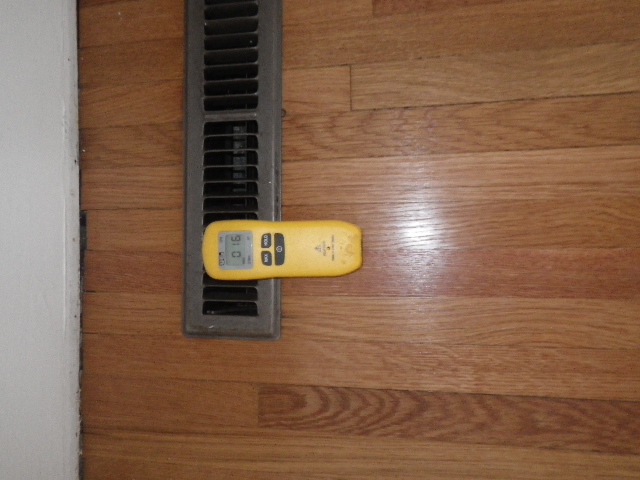 spaces. The principal gas? Carbon monoxide.
spaces. The principal gas? Carbon monoxide.
The reading on my handy little toy there indicates that the furnace is releasing 16 parts per million of carbon monoxide. As a reference, at levels above 9 parts per million, carbon monoxide begins to affect health. At 35 parts per million, it becomes toxic. These are based on 8 hour exposure cycles, about the amount of time you spend (hopefully) sleeping.
There are a couple of things that you can do to protect yourself. First, have the furnace serviced on a regular basis and make sure you specify that the heat exchanger is inspected for cracks. While you would think that it would be routine, my experience in this area is that it isn't.
Second, install carbon monoxide detectors. They are relatively inexpensive. In older homes, it is perfectly acceptable to use either the plug-in type or ceiling mounted battery operated detectors. In newer homes in Washington State, they are required to be hard-wired into the home.
A special note for people selling homes in Washington State - you are legally required to furnish the home with detectors when you sell your home. This applies even if you are doing it as a for-sale-by-owner (FSBO).
If you are a buyer, I strongly recommend asking the inspector if he uses a carbon monoxide detector during his inspection. They're not foolproof - even if I get acceptable readings on mine, I'll request the heat exchanger be checked by an HVAC specialist - but they are very useful. A good inspector should have one.
Finally, what can be done about cracked heat exchangers? Replacement of the furnace, generally. That's the part that is expensive. It beats being one of the 500 people who die every year from CO poisoning, though.
Don't Break the Cripple Wall
Jack's neighbors called the cops - that's how loud the noise was when the top plate of his cripple wall broke - and they worried that he had shot himself. . Before we get into the details of Jack's case, who knows what a cripple wall is? . . . . Yeah, about what I figured. I'll keep it short.
The cripple wall is a short structural wall built within the crawlspace and designed to provide support to the home. It replaces the old post and beam system that we used in home up through the 1970's. The cripple wall is less expensive to install, less likely to move (it's usually built on a concrete footing), and easier to build. I've put in a picture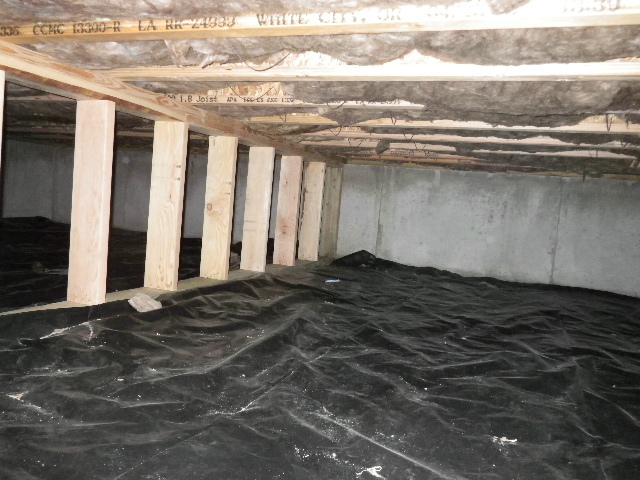 to help you visualize it. As you can see, it looks just like any other framed wall - a sole plate, a top plate, studs. The size will vary depending on how much load needs to be managed but most are either 2x4 or 2x6 pieces of lumber.
to help you visualize it. As you can see, it looks just like any other framed wall - a sole plate, a top plate, studs. The size will vary depending on how much load needs to be managed but most are either 2x4 or 2x6 pieces of lumber.
There is another similarity to the walls of your home - since this is a structural wall, it needs headers when the studs are removed just as the exterior walls have at the doors and windows.
Most of the time, these are installed automatically to make moving through the crawlspace easier - even for a skinny inspector, trying to squeeze my butt through a 14 inch opening takes a little wiggling.
Sometimes though, I find that either a plumber or the HVAC installers decided that the studs are in the way so they knock them out. No biggie, they think, quite erroneously.
Whoever installed Jack's ductwork knocked out two of the supports so instead of bracing every 16 inches as needed, the top plate spanned 4 feet. That's a long way for a 2x4 to carry load.
The 2x4 also had a knot in it at about the midpoint of the span. Knots are weaker and more prone to split. When they do, it happens fast and sounds explosive.
The effects of the HVAC contractors abuse of the foundation system aren't over. Each part of the system relies on the other parts to perform. Now the studs at either end of the opening are doing more work than they were intended so they will become increasingly likely to fail as well, and, like a set of very slow moving dominos, may affect the whole cripple wall and the interior walls above it in the living spaces.
The good news is that repairs are both possible and not very challenging or expensive. We need more support for the cripple wall on both sides of the ductwork. We also need a fix for the broken top plate - which is where I punt and suggest you need an engineer or really good structural contractor who's done these types of repairs before.
For those that are curious, this house is less than seven years old. If an inspection had been done on it at the time of purchase, the damaged cripple wall likely would have been spotted and fixed.
Washington State License #215
Former SBCC Member, Former Chairman State Home Inspector Advisory Licensing Board.


